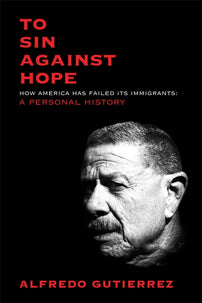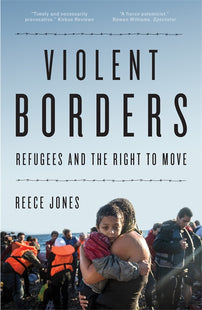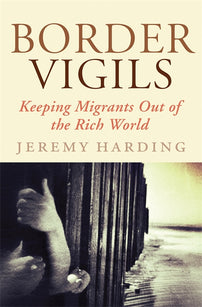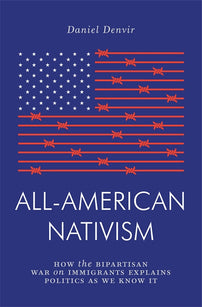Broadside for the Trump Era: Building a Regime of Restrictive Immigration Laws, 1840-1945
In this compact, printable history, Felice Batlan traces the development of US immigration restrictions from the mid-nineteenth through the mid-twentieth century.

Broadsides for the Trump Era is a series of one-to-two-page, printable handouts commissioned by Historians for Peace and Democracy. Each broadside presents a brief summary and analysis of a moment in American history that informs one element or another of the Trump presidency.
Click here to download Broadside #6: Building a Regime of Restrictive Immigration Laws, 1840-1945, by Felice Batlan, Professor of Law at Chicago-Kent College of Law at Illinois Institute of Technology, and author of Women and Justice for the Poor: A History of Legal Aid, 1863–1945.
Racism and Immigration
Although we often imagine the United States as a refuge for immigrants, from the 1840s to the present day, nativist and anti-immigrant ideologies have resulted in laws intended to limit immigration or increase deportations. Many of these laws were blatantly racist as well as directed at keeping the poor out of the United States. Such laws and their enforcement can be understood as a continuation of the embedding of white supremacy into law, whether it be the removal and massacre of first nation people or the enslavement of African Americans.
The federal government’s first naturalization law in 1790, regarding who could become a US citizen, limited citizenship to whites. White supremacy often served the elite and middle-class, who gained land, labor, and markets, while ensuring that poor and working-class whites would receive enough of the privileges of whiteness that they would not become allies with non-whites.
Until the 1880s, for the most part, individual states controlled immigration and their laws were primarily directed at preventing poverty stricken people or those with contagious diseases from immigrating. For example, Massachusetts denied entry to and deported Irish migrants attempting to escape famine and poverty in the 1840s and 1850s.
Federal Laws
Growing anti-immigration sentiment in the 1880s, and a series of US Supreme Court decisions finding that states did not have the power to control immigration, resulted in the US Congress passing the first large-scale general immigration law in 1882. The framework of the law was based upon which immigrants were fit to live in the US and potentially become citizens. Specifically, it excluded immigrants who were “likely to become public charges,” meaning those immigrants who did not have the ability to financially support themselves.
That same year, in response to zealous anti-Chinese racism, particularly in the Western states, Congress passed the Chinese Exclusion Act, which prohibited the immigration of Chinese laborers. In some sense, the 1882 law was a vast expansion of a narrower and more specific 1875 law that had prohibited the importation of Asian laborers who were held in involuntary servitude, along with prostitutes. The government particularly used the prohibition of prostitutes to prevent Chinese women from entering the country. Now, the 1882 law prohibited all Chinese laborers. This occurred after the railroads had used such workers to build the railroad tracks that connected the nation. Chinese immigrants were accused of stealing jobs from Americans, smuggling and selling opium, and running prostitution rings.
Congress next passed the Immigration Act of 1891, which expanded the grounds upon which potential immigrants could be excluded from entering the US and created the federal Bureau of Immigration. Congress also enacted deportation laws beginning in 1891. Deportation was originally aimed at those immigrants who were “likely to become a public charge” within one year of entry, but Congress extended it to two, then three, and finally five years in 1917.
Likewise, in 1910 with passage of the Mann Act, immigrant women who engaged in prostitution and those who trafficked in them were forever deportable. Later laws made immigrants who committed felonies deportable. These laws represented a growing distance between the categories of citizens and “aliens,” and reversed the presumption that immigrants allowed to enter the US would be able to stay in the US.
Administering Laws
As Congress created a schema of restrictive laws, it also built the apparatus of federal administrative control. Federal immigration officials at ports of entry such as Ellis Island in New York and Angel Island in California inspected potential immigrants for signs of physical or mental illness and interrogated immigrants to discern their ability to support themselves. Between the 1890s and 1917, most white immigrants who were denied permission to immigrate to the US fell into the very broad and ambiguous “likely to become a public charge” provision. This afforded tremendous discretion to immigration officials, and precisely what it meant was not defined by law. Rather it was a catchall provision. Immigrant rights advocates argued that immigration officials used it to exclude anyone who seemed to them undesirable, including single women. Courts rarely intervened in overturning the decisions of immigration officials, and those excluded from the US had few legal or Constitutional rights.
World War I
World War I heralded a heightened sense of patriotism and a new wave of conservatism, xenophobia, and fear of radicalism, especially Communism, after the Russian Revolution of 1917. Congress passed the Immigration Act of 1917, which barred multiple categories of people, including those from a vast number of Asian countries, along with migrants espousing radical political views. The elite Boston organization, the Immigrant Restrictive League, had long argued for the need for a literacy test to further restrict immigration, and it was finally enacted in the 1917 law. Such a test was specifically enacted to exclude immigrants from Southern and Eastern Europe who were continually blamed for pauperism, crime, and now juvenile delinquency.
A combination of events created a continuing sense of crises surrounding immigration, including the fear that hundreds of thousands of Southern and Eastern Europeans (many Jewish or Catholic) intended to immigrate to the US as World War I ended. Likewise, in 1919 and 1920, the federal government (more specifically the Department of Justice led by A. Mitchell Palmer) engaged in a series of raids in which hundreds of immigrants were deported for being communists or anarchists.
National Quota Laws
In 1921, Congress enacted a new law that established a quota system, based upon nationality. The law was specifically meant to limit the number of non-Western European immigrants. It provided that the yearly number of aliens of any nationality who could be admitted to the US for purposes of immigration was three percent of the number of foreign born persons of such nationality resident in the US as recorded in the 1910 census.
The 1921 Act also set a limit of 155,000 immigrants per year, and allowed for only 15 percent of such immigrants to be from Southern or Eastern Europe. Importantly, “Western Hemisphere” countries, including Mexico, were not subject to the quota laws. Pro-immigrant advocates adamantly criticized the use of quotas as race discrimination.
Congress, in a riot of xenophobia, passed the 1924 Immigration Act which based national quotas on the 1890 census, further restricting the number of non-Northern Europeans allowed to immigrate. Quotas were so low and exceptions so narrow that it often made family reunification by immigrants already in the US close to impossible. Only US citizens, born or naturalized, could sponsor family members to immigrate outside of the quota system. To become a citizen, an immigrant had to become “naturalized.” Naturalization required five years of continuous residency in the US, passing a difficult citizenship examination, and paying costly fees. For many, this was an insurmountable challenge.
In addition, only those whom the government considered white or of African descent could become naturalized citizens. Pro-immigrant organizations argued that naturalization tests conflicted with the reality of an immigrant’s life — one that was filled with labor in order to survive and perhaps save for passage for a family member. Citizenship, they argued, should not rest upon a test but rather the life that people constructed and lived in the US.
The Great Depression
In 1929, the stock market crashed, beginning a global economic depression. With unemployment soaring, President Hoover, in 1931, issued an Executive Order based on specious concerns that immigrants were taking employment away from “Americans.” He instructed the State Department to examine immigration laws, rules, and procedures to determine how to significantly reduce immigration. The Department determined that the standard of what “likely to become a public charge” meant should be enhanced. Potential immigrants to the US had to demonstrate that they could indefinitely support themselves without employment — an impossibly high standard. The State Department boasted that in five months almost 100,000 people were denied immigration visas. Likewise, the federal government began deportations and forced repatriations on an unprecedented scale, and Mexicans especially suffered as a variety of guest worker programs, which were highly beneficial to US farming interests, ended. The repatriation of Mexicans was an enormous program of racial expulsion.
Hitler's Refugees
Hitler came to power in Europe in the 1930s, and large numbers of Jews and others persecuted by the Third Reich attempted to seek refuge in the United States. With restrictive immigration laws firmly in place, such victims were continually denied entry to the US despite the pleas of the Secretary of Treasury, Henry Morgenthau, Jewish organizations, and even Eleanor Roosevelt. In fact, the State Department, a bastion of Protestant elites, was rife with anti-Semitism.
As the US entered World War II and began drafting men into the military, significant labor shortages occurred. The US and China also became allies. This resulted in two changes in immigration law. The Chinese Exclusion laws were finally repealed and guest worker programs began once again bringing temporary workers from Mexico and Central America. Yet, the discriminatory national origins quota system remained in place until 1965.
Suggested Reading:
S. Deborah Kang, The INS on the Line: Making Immigration Law on the U.S.-Mexican Border, 1917-1954 (New York: Oxford University Press, 2017).
Daniel Kanstroom, Deportation Nation: Outsiders in American History (Cambridge, MA: Harvard University Press, 2010).
Mai M. Ngai, Impossible Subjects: Illegal Aliens and the Making of Modern America (Princeton, NJ: Princeton University Press, 2004).
Lucy Salyer, Laws Harsh as Tigers: Chinese Immigrants and the Shaping of Modern Immigration Law (Chapel Hill: University of North Carolina Press, 1995).
[book-strip index="1" style="display"]





